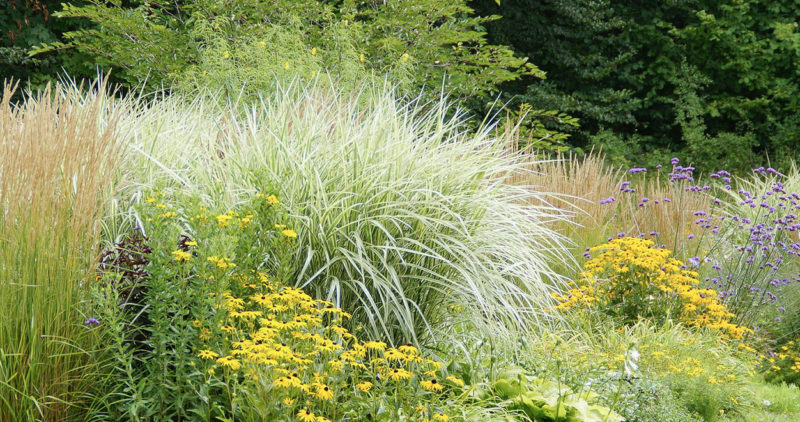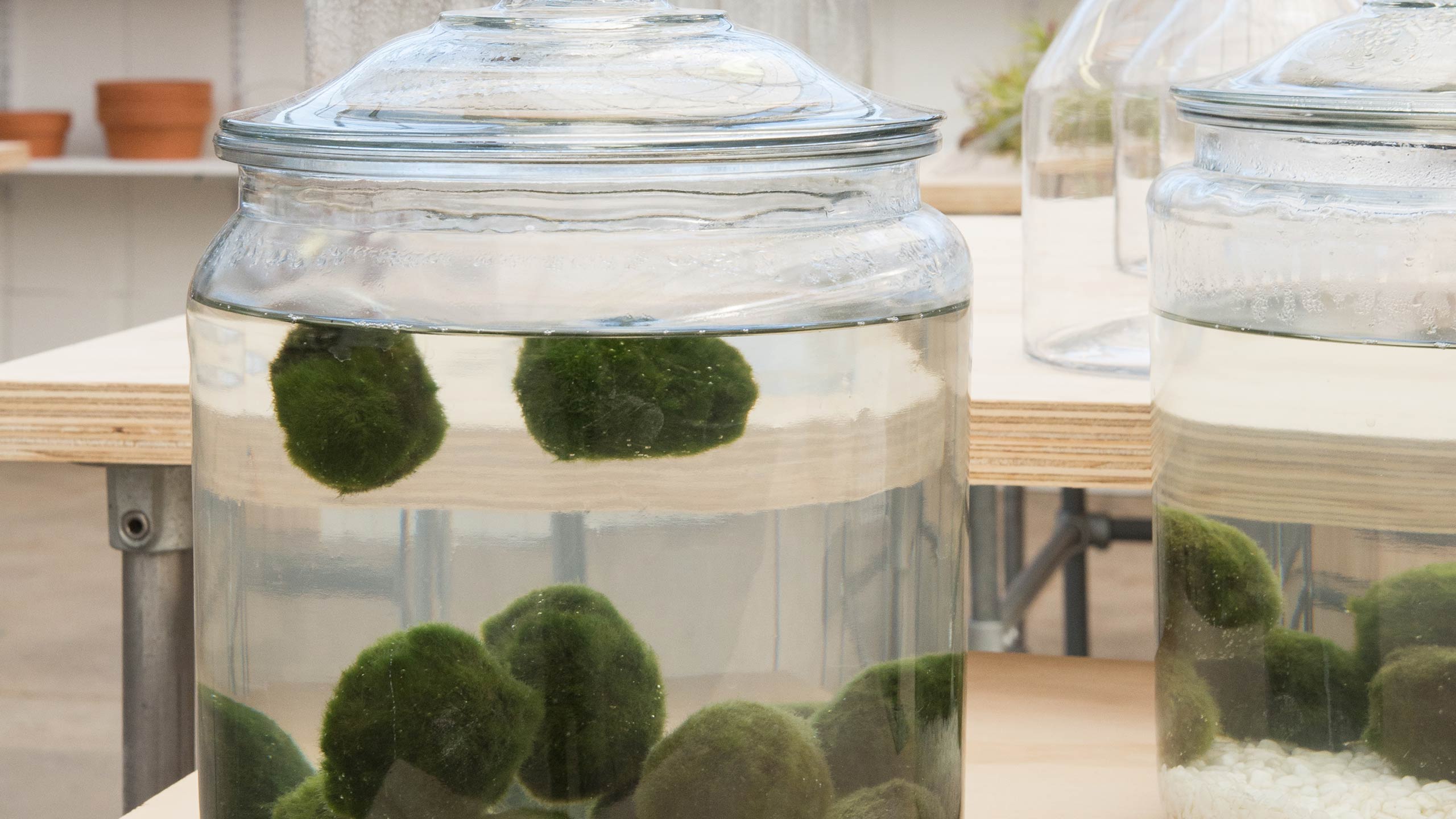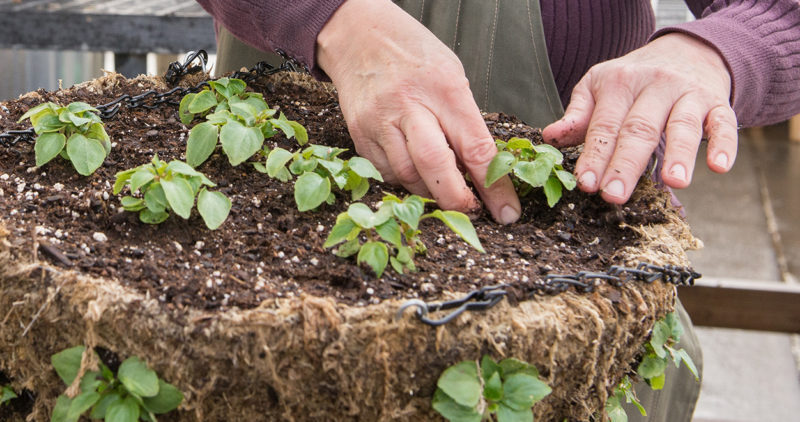
We know – and science supports this – that being surrounded by green plants reduces our stress and helps us feel a little happier as we go about our day. But what if we have all the plants our space, light, and time can handle? No problem. Here are three easy and creative ways to add even more living greenery – for the smallest of spaces too.

Marimo Moss Balls
At our houseplant event last month, a small group gathered around a table just inside the greenhouse doors. On the table were glass jars – filled with water and inhabited by…fuzzy green balls of moss? These strange living green orbs are Marimo moss balls, and they look like a curious combination of living plant, aquarium fish, and – as one visitor noted – those Tribble things from Star Trek. Marimos have been popular aquarium plants for a long time, but creative coordinator Dana Howerter says they’ve exploded on Instagram as people find all kinds of creative ways to display these intriguing “creatures” – with or without fish involved. Despite the common name, Marimo moss balls are not actually moss – they’re solid spheres of a species of algae that’s native to cool lakes in Japan, Estonia, and Iceland. According to legend, Marimos first came to be when two young lovers ran away from their disapproving families. Sadly, in their flight, they fell in a lake, and their hearts became Marimo balls. Today, Marimos are given as tokens of affection and good luck. Most Marimos you see will be two to three inches in diameter and – given enough time – can grow much larger. (Twelve inches in diameter is the largest recorded.) You’re not likely to see yours get that big though – they’re extremely slow-growing and may only produce 5mm of new growth per year. They can live for decades however and are often passed down to family members – just like Christmas cacti.
Marimo balls are easy to care for, and their simple green beauty provides loads of respite from a busy day as you contemplate the swaying green filaments and watch little bubbles form across the algae’s surface. They’ll live in any glass container – preferably filled with purified or distilled water, but tap water will work too. If you use tap water, it’s a good idea to let the water sit for a couple of days before you place your Marimo in it. This allows any chlorine to dissipate from the water. If you have hard water, a liquid water conditioner – like the kind used to treat water for a fish aquarium – will bind up excess heavy metals as well. Be sure to change at least half of the water every couple of weeks. This keeps the water clean and refreshes the oxygen that the algae absorb.
Marimos are happy just about anywhere you’d keep a low- or medium-light houseplant. They like indirect light – imagine the filtered light you’d experience sitting on the bottom of a shallow lake – and cooler temperatures. Direct sun and warm water may cause your Marimo to turn brown. If this happens, move the container to a cool location with indirect light and add a pinch of aquarium salt to the water to help it recover. If your Marimo is floating and you don’t want it to, gently squeeze it underwater to release the air bubble that’s trapped inside the algae – it should sink to the bottom after its little “burp.” And in nature, it’s the lake’s gentle wave action that keeps the algae perfectly round, so if you don’t want your Marimo to develop a flat spot, be sure to give the water an occasional swirl to roll the ball around a little.

Tillandsia
If you’d like to try another plant with a completely unique look – one that can sit or hang almost anywhere and takes up little to no space – then take a look at our collection of tillandsia. Tillandsia is a genus of plants belonging to the Bromeliaceae family – along with other colorful bromeliads you might know in the genera Aechmea, Guzmania, and Neoregelia. Many species in the genus Tillandsia are tiny and completely epiphytic – meaning they don’t need soil. Instead, they absorb all the water and nutrients they need from the air around them. That’s why they’re also commonly just called “air plants.” Free from being earth-bound, tillandsias provide an almost limitless range of options for display and creative expression. They can be set in the natural holes in a piece of wood or bark. You can suspend them from the ceiling in wire or glass containers – or by clear threads, so they appear to float in mid-air. You can set them in a large glass jar with decorative rock, seashells, and tiny twisted branches for an ocean-inspired scene. As for care, tillandsia are pretty low-maintenance, but they do require a couple of things to really thrive. Like their other bromeliad cousins, they like lots of bright but indirect light. And they need a thorough drench in unsoftened water a couple of times each week – maybe once more if your house is particularly dry with the furnace running in the winter. Take care of these two things and your tillandsia may even reward you with one of their beautiful blooms.

Tiny Houseplants
If you’d like to add a friendly green plant to your workspace, but you don’t have room for a full-sized one, a tiny houseplant may be just what you’re looking for. In our new Terrarium Shop, we have a collection of some of our favorite houseplants – like ferns, spider plants, parlor palms, ivies, and more – in wee baby sizes that are hard to resist. This size is commonly used in elaborate terrarium displays and miniature gardens, but there’s no reason why these adorable little babes can’t stand on their own too. All they need is a small pot to fit their small root system and – in most cases – indirect light from a nearby window or fluorescent bulb. For a bit of personal creative expression, you could add a layer of decorative rock on top of the soil and maybe a little figure from our collection of miniature gardening décor – or a favorite trinket. We have several tiny animals like dogs, turtles, rabbits, and even dragons to sit under your tiny plant. Or a little gnome could keep you company. Perhaps just a simple wooden bench under a little palm tree could remind you of your favorite place to relax when the workday is done.
We know you love your big, beautiful houseplants – and maybe you have several already. But if your space is small, your creative expression needs an outlet, or you’re just looking for a guaranteed conversation-starter, consider adding one of our unique and quirky choices to your collection.


